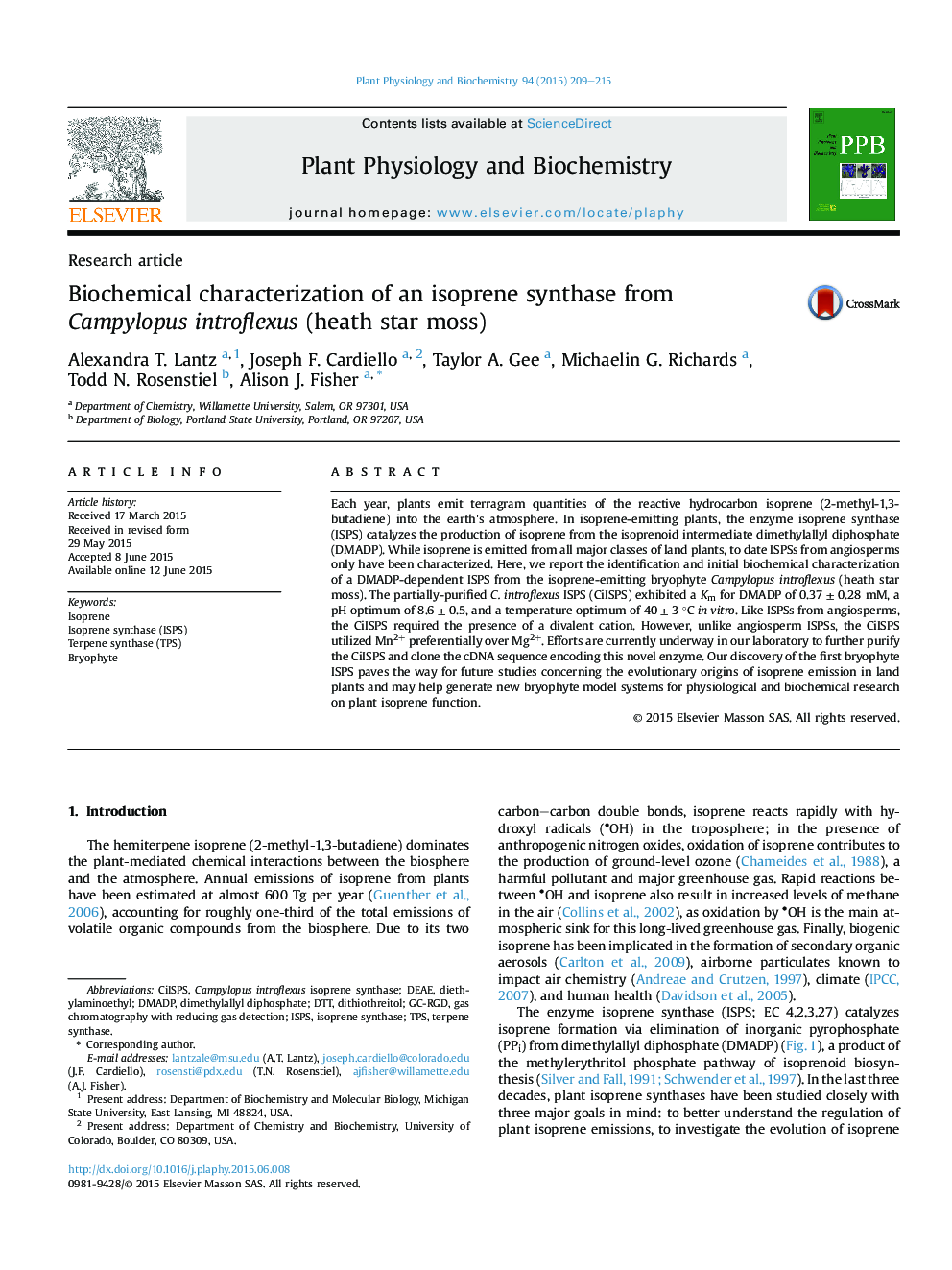| Article ID | Journal | Published Year | Pages | File Type |
|---|---|---|---|---|
| 2014925 | Plant Physiology and Biochemistry | 2015 | 7 Pages |
Abstract
Each year, plants emit terragram quantities of the reactive hydrocarbon isoprene (2-methyl-1,3-butadiene) into the earth's atmosphere. In isoprene-emitting plants, the enzyme isoprene synthase (ISPS) catalyzes the production of isoprene from the isoprenoid intermediate dimethylallyl diphosphate (DMADP). While isoprene is emitted from all major classes of land plants, to date ISPSs from angiosperms only have been characterized. Here, we report the identification and initial biochemical characterization of a DMADP-dependent ISPS from the isoprene-emitting bryophyte Campylopus introflexus (heath star moss). The partially-purified C. introflexus ISPS (CiISPS) exhibited a Km for DMADP of 0.37 ± 0.28 mM, a pH optimum of 8.6 ± 0.5, and a temperature optimum of 40 ± 3 °C in vitro. Like ISPSs from angiosperms, the CiISPS required the presence of a divalent cation. However, unlike angiosperm ISPSs, the CiISPS utilized Mn2+ preferentially over Mg2+. Efforts are currently underway in our laboratory to further purify the CiISPS and clone the cDNA sequence encoding this novel enzyme. Our discovery of the first bryophyte ISPS paves the way for future studies concerning the evolutionary origins of isoprene emission in land plants and may help generate new bryophyte model systems for physiological and biochemical research on plant isoprene function.
Keywords
Related Topics
Life Sciences
Agricultural and Biological Sciences
Plant Science
Authors
Alexandra T. Lantz, Joseph F. Cardiello, Taylor A. Gee, Michaelin G. Richards, Todd N. Rosenstiel, Alison J. Fisher,
